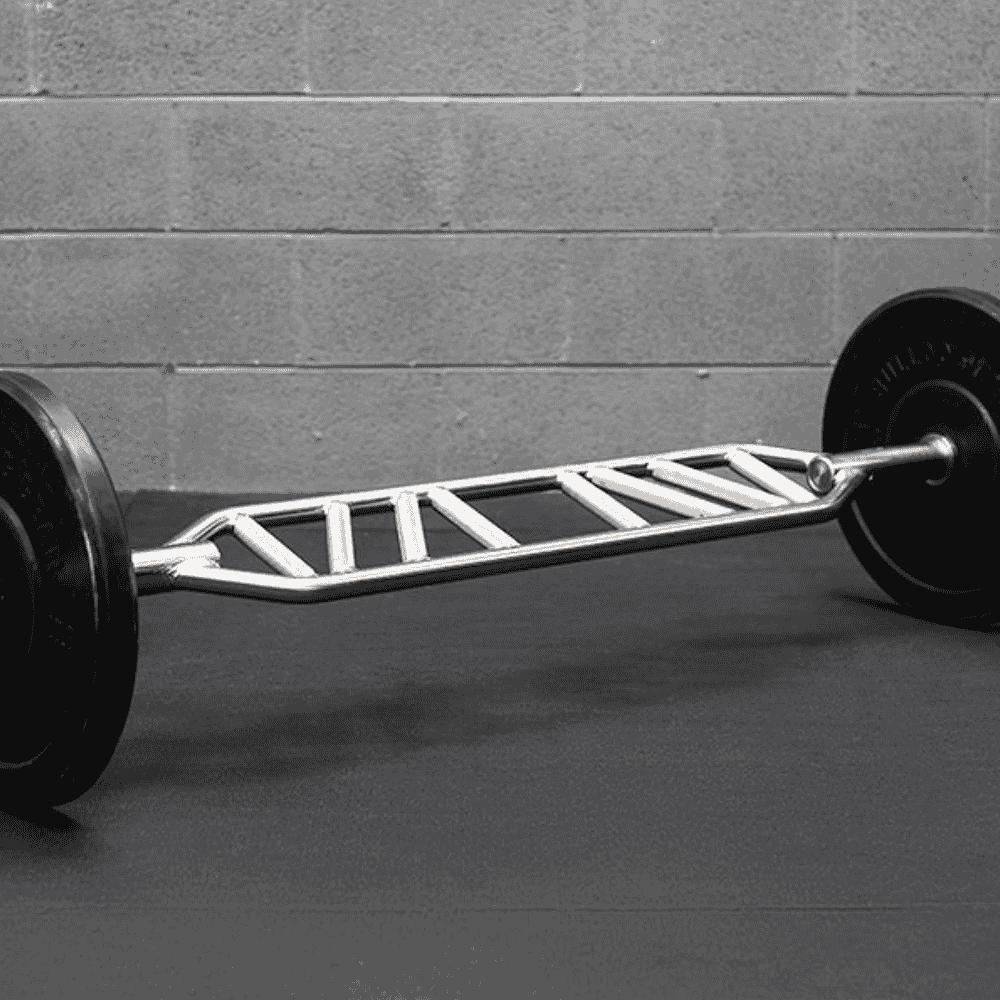When it comes to strength training, choosing the right equipment can have a major impact on your performance, muscle development, and overall joint health. Two of the most commonly used barbells in weightlifting are the Swiss Bar and the Straight Bar, each offering distinct advantages depending on your training goals.
While the Straight Bar has long been the standard for exercises like bench presses, deadlifts, and squats, the Swiss Bar provides a more ergonomic, joint-friendly alternative.
So, which one should you use for maximum strength gains? Let’s break it down.
Understanding the Swiss Bar and the Straight Bar
The Straight Bar is the traditional barbell used in gyms worldwide. It requires either a pronated (overhand) or supinated (underhand) grip, which is great for building overall strength but can sometimes place stress on the shoulders, wrists, and elbows.
The Swiss Bar, on the other hand, features multiple neutral grip handles, allowing for a more natural wrist and shoulder position. This bar is particularly useful for lifters who experience joint discomfort or want to target muscles from different angles.

Key Differences: Swiss Bar vs Straight Bar
1. Shoulder and Joint Health
One of the biggest considerations when choosing between these two bars is how they affect the joints:
- Swiss Bar: The neutral grip reduces stress on the shoulders and wrists, making it an excellent option for those recovering from injuries or dealing with chronic pain. The ergonomic design also promotes better joint alignment, helping lifters maintain longevity in their training.
- Straight Bar: While effective for strength training, the Straight Bar can put significant stress on the shoulders, especially during pressing movements like the bench press and overhead press. Lifters with pre-existing shoulder issues may find these exercises uncomfortable or even painful over time.
2. Strength Gains and Muscle Activation
Strength training isn’t just about how much weight you lift—it’s also about how well your muscles are activated during an exercise.
- Straight Bar: Because it allows for heavier lifts and follows a familiar movement pattern, the Straight Bar is ideal for compound lifts like deadlifts, squats, and barbell rows. It remains essential for powerlifters and bodybuilders who prioritize traditional strength-building movements.
- Swiss Bar: While it doesn’t allow for the same max loads as the Straight Bar, the Swiss Bar engages muscles in different ways. The varied grip positions target muscles from unique angles, making it a great tool for hypertrophy (muscle growth) and strength development without overloading the joints.
3. Exercise Versatility
Both bars offer versatility in training, but they excel in different areas:
- Swiss Bar: Best for pressing movements, pulling exercises, and arm training. It’s particularly effective for bench presses, overhead presses, hammer curls, and triceps extensions, offering multiple grip positions for muscle isolation.
- Straight Bar: Essential for powerlifting and Olympic lifting. If your training includes squats, deadlifts, and cleans, the Straight Bar is a non-negotiable piece of equipment.
4. Grip Strength Development
Grip strength is a crucial factor in overall lifting performance.
- Swiss Bar: The neutral grip allows for a firm and natural hold, reducing wrist strain and promoting endurance in pulling movements.
- Straight Bar: Since it requires a pronated or supinated grip, the Straight Bar tends to demand more forearm and grip strength, which is beneficial for lifts like deadlifts and pull-ups.
Which Bar Should You Use?
Choose the Swiss Bar If:
✅ You have shoulder, wrist, or elbow pain and need a joint-friendly alternative.
✅ You want to enhance muscle engagement with varied grip positions.
✅ You’re looking for a versatile bar that allows you to perform pressing, pulling, and arm exercises with less strain on the joints.
Choose the Straight Bar If:
✅ You’re focusing on powerlifting or Olympic lifting.
✅ You need a barbell for compound movements like squats, deadlifts, and rows.
✅ You want to maximize strength gains with heavier loads.
Final Verdict: Which Bar is Better?
There’s no one-size-fits-all answer to whether the Swiss Bar or Straight Bar is better for strength gains. The Straight Bar remains superior for traditional compound lifts and heavy strength training, while the Swiss Bar provides a safer and more comfortable alternative for pressing and pulling movements.
The best approach? Incorporate both bars into your training routine.
Use the Swiss Bar for joint-friendly pressing movements and muscle isolation, and stick to the Straight Bar for foundational strength lifts like deadlifts and squats.
Upgrade Your Strength Training Today
If you want to improve your workouts while reducing strain on your joints, consider adding a Swiss Bar to your home gym.
At KEFL, we offer high-quality Swiss Bars designed for durability, comfort, and maximum performance. Explore our collection and take your training to the next level!





